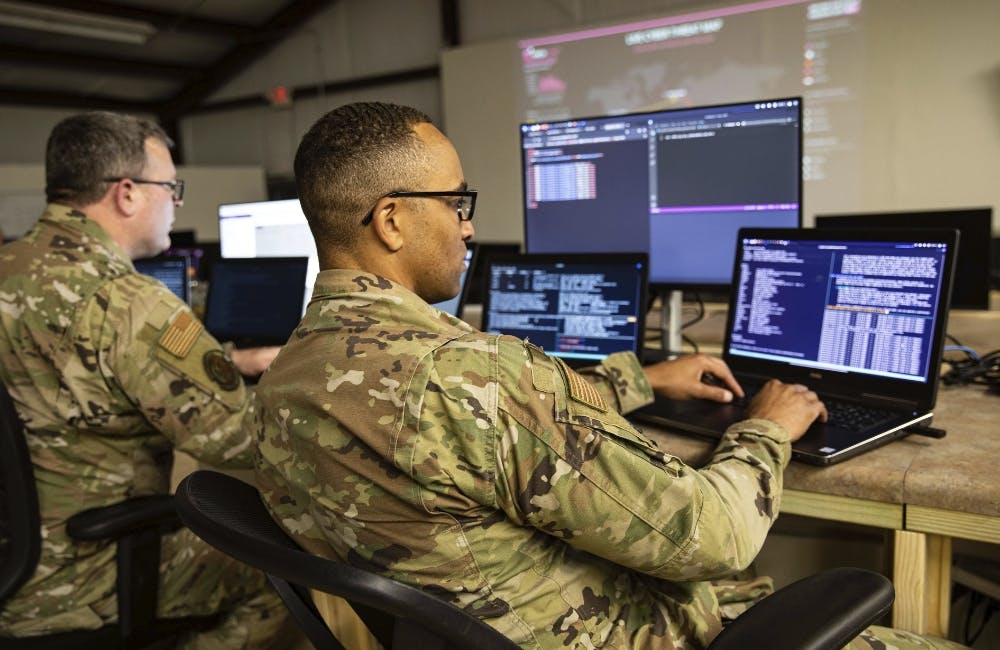Army Assesses Cyber Posture of Its Weapons, Control Systems Ahead of Zero Trust
The U.S. Army is tasked with evaluating its weapons and control systems, as well as the Mission Partner Environment cyber posture to ensure it addresses zero trust principles.

As the U.S. Army looks to stand up a unified network based on zero trust principles, it will soon be assessing its weapons systems, control systems and the Mission Partner Environment to gain a clearer understanding of what cybersecurity implementation would look like on those systems in accordance with the zero trust framework.
The Defense Department’s weapons systems are more software-reliant and networked than ever, making them vulnerable to cyber attacks. Developing secure weapons systems is highly challenging due to new and legacy systems living side by side and also supply chain disruptions, among other factors.
“We’re going to have to partner on that effort to ensure that those assessments are also addressing zero trust principles. … We need to define what that looks like … not necessarily the capabilities that we’re implementing in enterprise, but as long as those weapon systems are going to have the zero trust principles,” Col. Michael Smith, director of the Zero Trust Functional Management Office, said at a May 24-25 Army technical exchange meeting in Philadelphia.
The Pentagon has also struggled with its Mission Partner Environment efforts as it looks for ways to effectively communicate with and fight alongside its foreign allies and partners.
The Air Force has been appointed as the executive agent for the secret and below releasable environment, or SABRE, a software tool designed for information sharing between the U.S. military and its partners. As the Army is working on deploying its variant of the Mission Partner Environment network, it will begin assessing what zero trust implementation will look like in that environment.
“We have to bring in the entire Mission Partner Environment. What does that look like? Still trying to understand that myself,” Smith said.
The Army has also been tasked with assessing its control systems responsible for managing critical infrastructure that supports the service’s mission.
“So many control systems, they are standalone legacy systems used for power, water. … Working through what cybersecurity implementation looks like on those systems with zero trust principles, not necessarily the capabilities that we’re implementing in the enterprise,” Smith said.
The Army has been conducting zero trust gap analysis to better understand its networking and security ecosystem. It recently completed an enterprise-level zero trust gap analysis and is currently using the methodology to expand the analysis into its classified environments and tactical spaces.
Data tagging, automation and ICAM solutions integration remain the biggest challenges in the service’s zero trust implementation efforts.
“Those … are very key to getting our tactical environment from a good zero trust solution to a great zero trust solution,” said Chief Warrant Officer 3 (CW3) Benjamin Koontz at the meeting.
Data-tagging solutions needed to connect all services for successful data exchange remain a challenge even as DOD moves ahead with efforts such as Joint All-Domain Command and Control (JADC2).
“DOD has left it up to each of the services and other organizations to create their own data tagging solutions. So what does that look like when I receive data from the Air Force? What does data look like that leaves the Army environment and it goes to another? So we’ve raised that as a significant concern, the last DOD Zero Trust Summit, which was a few weeks ago. So the DOD CIO leaders and Zero Trust Portfolio Management Office are going to take a swag and maybe how we can better align that across all the services,” Smith said.
“Joint Staff … is trying to address for all services from JADC2 perspective and a number of other initiatives is how they’re trying to get after that. So in terms of in the Army perspective, we realize there’s some challenges,” said Col. Evert Hawk, mission command lead for the Army’s Network Cross-Functional Team.
This is a carousel with manually rotating slides. Use Next and Previous buttons to navigate or jump to a slide with the slide dots
-

AI Foundations Driving Government Efficiency
Federal agencies are modernizing systems, managing risk and building trust to scale responsible AI and drive government efficiency.
43m watch -

Agencies Tackle Infrastructure Challenges to Drive AI Adoption
Federal agencies are rethinking data strategies and IT modernization to drive mission impact and operational efficiency as new presidential directives guide next steps.
5m read Partner Content -

Generative AI Demands Federal Workforce Readiness, Officials Say
NASA and DOI outline new generative AI use cases and stress that successful AI adoption depends on strong change management.
6m read -

The Next AI Wave Requires Stronger Cyber Defenses, Data Management
IT officials warn of new vulnerabilities posed by AI as agencies continue to leverage the tech to boost operational efficiency.
5m read -

Federal CIOs Push for ROI-Focused Modernization to Advance Mission Goals
CIOs focus on return on investment, data governance and application modernization to drive mission outcomes as agencies adopt new tech tools.
4m read -

Fed Efficiency Drive Includes Code-Sharing Law, Metahumans
By reusing existing code instead of rewriting it, agencies could dramatically cut costs under the soon-to-be-enacted SHARE IT Act.
5m read -

Navy Memo Maps Tech Priorities for the Future Fight
Acting CTO’s memo outlines critical investment areas, from AI and quantum to cyber and space, as part of an accelerated modernization push.
5m read -

DOD Can No Longer Assume Superiority in Digital Warfare, Officials Warn
The DOD must make concerted efforts to address cyber vulnerabilities to maintain the tactical edge, military leaders said at HammerCon 2025.
4m read -

New NSF Program Cultivates the Future of NextG Networks
The agency’s new VINES program looks to tackle key challenges like energy efficiency and future-proofing wireless tech.
21m watch -

Tracking CIOs in Trump's Second Term
Stay informed on the latest shifts in federal technology leadership as new CIOs are appointed and President Trump's second term takes shape.
6m read -

DHA CDAO Spearheads Master Data Catalog to Boost Transparency
Jesus Caban plans to boost DHA's data maturity through a new master data catalog, governance frameworks and inventory of tech tools.
5m read -

Trump Orders Spark Government-Wide Acquisition Overhaul
As Trump pushes for a faster, simpler procurement system, agencies are leveraging AI and adapting strategies to meet new requirements.
5m read
















